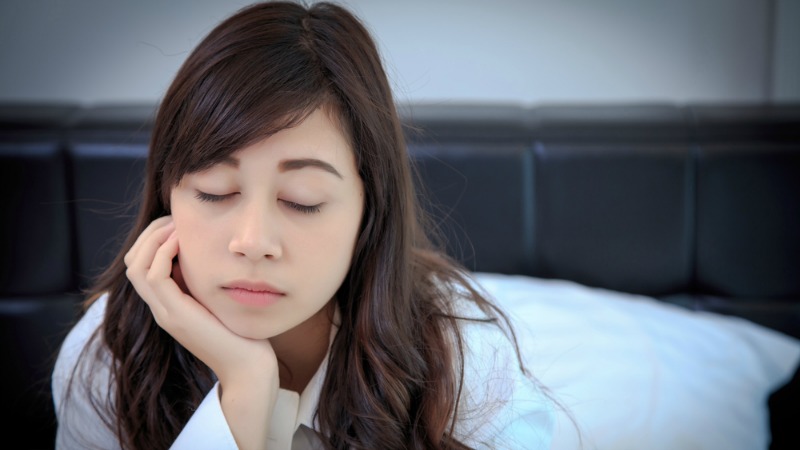The Severity of Sleep Walking and Possible Treatments
10 min read
Last Modified 15 September 2023 First Added 28 October 2014
The kinds of activity people get up to when they sleepwalk vary vastly. Sleepwalking is classed as anything from sitting up in bed to driving a car down the street whilst asleep. For many, the condition is not a concern and can even be humorous but it can also be hazardous when occurring more regularly and at the more extreme end of the spectrum. There are a number of factors that can trigger sleepwalking, including anxiety, sleep deprivation, or drinking too much alcohol. The exact cause is unknown, but we look at some of the possibilities, as well as how to stop sleepwalking.
As it sounds, sleepwalking is the act of getting up and walking around while the person is asleep. Sleepwalking can also be doing a range of activities while in a state of sleep, such as sitting up in bed, walking about, doing routine activities, leaving the house to walk or even driving in their sleep, or even doing your job in your sleep. Although more common in children than adults, people who sleepwalk often don’t know they are doing this and will wake up without any knowledge of their actions. Sleepwalking can have a wide range of causes, however, it can also suggest a sleep disorder.
Sleepwalking usually occurs at night, often in the first few hours of deep sleep, and a sleepwalking episode can usually last several minutes or longer. Sleepwalking symptoms include:
What causes sleepwalking in adults and children is actually unknown, but there is a range of things that can trigger sleepwalking behaviours or even make it worse. One thing that was discovered about sleepwalking, like many behaviours, is that it runs in families. Meaning that if members of your family have ever had sleepwalking episodes you are more likely to sleepwalk as well.
Other things that can cause sleepwalking include:
Although as stated before, sleepwalking can be harmful. But for some sleepwalking can be dangerous.
For comedian and film-maker Mike Birbiglia, sleepwalking became a serious issue, although he ignored it for a long time. Birbligia, writer and star of the award-winning film Sleepwalk With Me, found himself in A&E after throwing himself through a hotel window. A similar incident happened in the middle of 2014 when British tourist Amy Wigfull fell 50ft from a balcony at a Spanish hotel while sleepwalking. Doctors said that she only survived because she was fast asleep and her body was therefore in a relaxed state.
It was after his Washington hotel sleepwalking incident, described in an article he wrote for the Guardian, that Birbiglia decided ‘it was time to see a Doctor, it was time to stop putting things off’.
Sleepwalking is most prevalent in children, but, for a minority, the condition continues into adulthood. There are many myths about the condition. One of the most constant is that it is dangerous to wake a sleepwalker. Though it is true that it will be unpleasant for the sleeper it is unlikely to be perilous. The popular misconception is that people sleepwalk with their arms outstretched in front of them. The sight of someone sleepwalking can be quite unsettling for a witness. As stated before, despite being deeply asleep, sleepwalkers often have their eyes open and may also talk during the activity. This is due to the brain being in an unusual state of being active enough to dream- as in REM (Rapid Eye Movement) sleep- but no longer putting the body in a state of paralysis. Sleepwalking can occur during either stage of the sleep cycle.
Sleep neurologist and co-founder of SleepStation, Dr Kirstie Anderson, is familiar with how common sleepwalking is and explains the condition in more detail. She states:
‘20% of children and 2-3% of adults have some form of abnormal night-time behaviour although many people do not go to their GP about this. Often simple advice and time is all that is needed.’
Because there are dangers to sleepwalking the best thing to do if you notice someone sleepwalking is to make sure they are safe. Although sleepwalking can be as simple as sitting upright in bed, or as complex as getting dressed and walking outside, you should carefully monitor their actions. But never try to wake them up as this can be disorienting and possibly distressing. Instead, gently direct them back into bed where they are more than likely to soon fall asleep again.
Most sleepwalking episodes are harmless and if undisturbed, they will crawl back in bed and go back to sleep. However, it can become dangerous, monitoring someone can prevent a sleepwalking incident from happening. But, sometimes this isn’t always possible to do, so to prevent any accidents from happening while sleepwalking, it’s important to keep the areas of your home safe, and free of breakable or harmful objects they could trip over or use. Because some people may take a walk, drive, etc. while sleepwalking, it is also a good idea to keep your windows and doors locked, and hide any keys to prevent any dangers from happening.
If your child sleepwalks, fitting safety gates or keeping harmful things out of reach is a good idea. If your child has a bunk bed and sleepwalks, having them sleep on the bottom bunk is safer. And always remember that it is important to tell anyone that may look after your child about their sleepwalking history so they know what to look out for and what they should do if it happens.

Occasional sleepwalking doesn’t usually require medical attention and is rarely a sign of anything serious and may even disappear after a time, especially in children. But, doctors like Dr Anderson promote a regular sleeping routine and relaxation before bedtime as the best preventative measure for sleepwalking. Stress is identified as a common factor in patients’ sleepwalking, as is sleep deprivation. Another piece of general advice from GPs is to limit audio-visual stimulation and blue light immediately before bedtime.
If sleepwalking happens frequently, or if you’re concerned about someone injuring themselves while sleepwalking, medical attention may be the best option. The GP may refer you to a specialist sleep centre and sleep studies can be arranged. Dr Anderson explains that getting to the related issues is preferable. She advises:
‘Making sure that any other sleep problems such as very loud snoring or bad restless legs are treated and discussed with the GP initially. There are medications that can help sleepwalking if symptoms are severe, but these are usually prescribed from a specialist sleep service because none of the current therapies have been tested in a randomised controlled trial and they are being used off license so should have specialist support’
Although medicine is not usually used to treat sleepwalking, in extreme and more complex cases, medication may be prescribed. Medications such as benzodiazepines, antidepressants, or other mental health medications can help you sleep and may reduce the frequency of sleepwalking episodes.
Although there are no specific treatments for sleepwalking, a general tip is to go to bed at a similar time every night, try to get enough sleep, and have a relaxing evening routine before you go to bed. Let’s explore some of the ways you can combat your sleepwalking.
Stress is a common cause of a number of different nighttime disturbances and could lead to sleepwalking in some cases. The best and most obvious answer for how to stop sleepwalking that’s stress-related is through targeting the cause of the problem. Traditional relaxation techniques include deep breathing, yoga, meditation, taking a warm bath or reading. Alternatively, simply chatting through the symptoms of the stress and clearly working out steps to help cope with it, could also put the mind at rest and aid in peaceful sleep.

Related: How to achieve clean sleep
Try to avoid drinking alcohol before bed, as it’s no surprise that heavy alcohol consumption, particularly in the evening, can cause nighttime disturbances like sleepwalking. If you are on the booze, think about what you are drinking and avoid mixers with caffeine in them and spirits that might give you heartburn.
Not just on a night out, but try to avoid drinking caffeine in general before bed, having coffee or tea before bed can keep you awake for hours and disturb your sleep, instead opt for decaf. As a final port of call, make sure you drink plenty of water during the day to keep yourself hydrated, and don’t forget to go to the toilet before snoozing, so you don’t wake up in the middle of the night needing the toilet.
Another effective treatment for sleepwalking is therapies including cognitive behavioural therapy and sleep hypnosis. Alice Pinion runs Head First Talking Therapy, which treats a number of conditions with sleep disorders such as sleepwalking. She says ‘Hypnotherapy can be an extremely powerful tool for dealing with a sleep walking’.
Her practice is concerned with mental well-being as the key to happy sleep. She explains, ‘often the person is physically expressing their mental restlessness by sleepwalking. Commonly the more stressed they are the more they sleepwalk. It’s best, therefore, to treat the person’s life stresses, worries, and fears, leading to a calmer, more relaxed person who sleepwalks less and less’.
Alice cites an example of a former client who regularly ate in the night whilst she was fast asleep. ‘Every night she would sleepwalk into the kitchen and pull out all the fatty, sugary snacks she normally avoided and messily pig out! Her partner couldn’t stop her as she’d get aggressive towards him so he would leave her to it’.
Thankfully, Alice was able to identify her client’s anxieties to alleviate worrisome thinking. This eased the stress that was causing the nighttime activity and stopped her sleepwalking.
If you are suffering from a severe cold, flu, or fever, you might be having disturbed sleep patterns. As stated earlier this might be causing your sleepwalking. Some liquid medicines taken at bedtime to reduce cold symptoms can also result in hallucinations and sleepwalking-type agitation throughout the night. Speak to your GP if you have any concerns. In short though, the healthier you are, the less likely you are to suffer from sleepwalking.
So there are some of the things that could lead to sleepwalking and a few ideas of how to stop it from happening. Strangely, no one really knows for sure what causes it, but if sleepwalking does affect you or someone close to you, the good news is that it usually doesn’t last for long. And as always, if you feel your sleepwalking is becoming a problem, make sure you speak to a health professional.